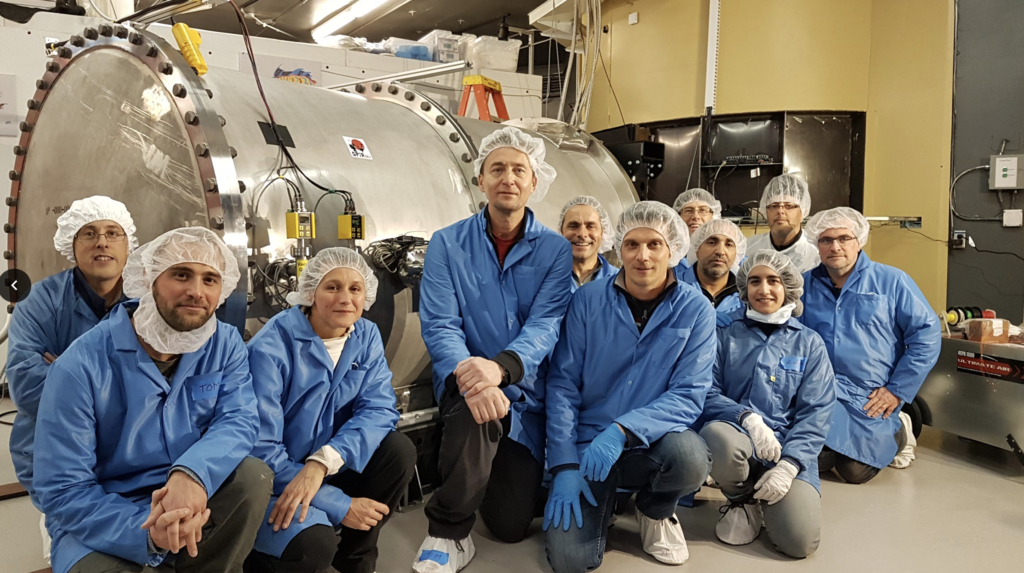After four months of hard work on Maunakea and over a decade in the making, SPIRou (SpectroPolarimètre InfraRouge), Canada-France-Hawaii-Telescope’s (CFHT) new planet hunting instrument, has made its first significant recording. On Thursday, April 24, 2018, around 7:50 p.m. Hawai‘i time, astronomers were able to capture light coming from the star AD Leonis. This is the first impressive collection of data from SPIRou since the instrument’s arrival from France.

The SPIRou team from Canada, France and CFHT
“We anticipate the astronomy community will use SPIRou extensively in the following decade,” says Jean-Francois Donati (CNRS), the principal investigator of SPIRou and leader of the SPIRou science team. “SPIRou will play a key role in the coordinated exoplanet surveys to come, involving multiple space-based missions.”
SPIRou was designed to discover Earth-like planets and to explore baby stars and their planetary systems in the making. Using a technique known as “velocimetry”, SPIRou detects the tiny wiggle in a star that indicates the presence of planets to very precise levels.
The instrument’s camera, a Hawai‘i 4RG or H4RG, is a new kind of infrared device that will greatly enhance the capabilities of SPIRou.
“The H4RG detector is an astonishing piece of technology,” says Rene Doyon, project co-PI from the Université de Montréal, where the camera was tested and assembled. “The SPIRou H4RG is the first detector of its kind on Maunakea and possibly the only one in the world being used for astronomical research this year.”
This first star it recorded, AD Leonis, is a very active red dwarf located 16 light years from Earth. This star is known for its strong magnetic fields and hugely energetic flares. “AD Leonis is very active star and therefore it’s a perfect target for the first SPIRou observations. We’re observing AD Leonis to determine if the data we observe with SPIRou matches the known results on the star” explains Claire Moutou, astronomer and SPIRou instrument scientist at CFHT.
Moving forward, the CFHT team will continue to test SPIRou to define the limits of what the camera can do before starting the science that it was designed to do. “A lot of work is still ahead for SPIRou, but we are encouraged by the results of the first commissioning run,” says CFHT’s director of science, Daniel Devost. “A sincere congratulations to the entire SPIRou team for the work they have put into this outstanding instrument.”
SPIRou was designed, funded and constructed with the support of a worldwide consortium of institutes.












